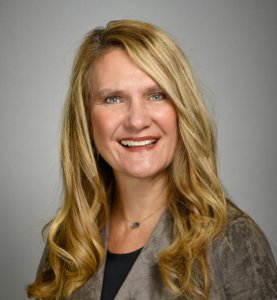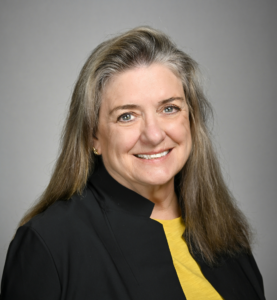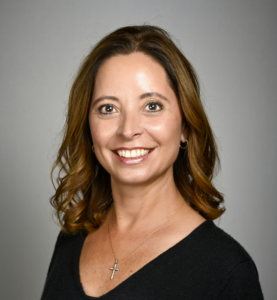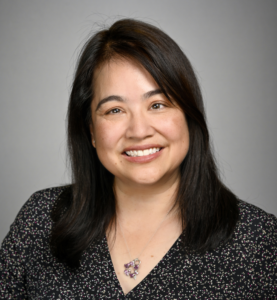The Academy’s Scientific Program Committee invites you to participate in the educational program at the Academy’s Annual Meeting by submitting scientific abstracts for consideration!
The Scientific Program offers scientist, educators, and clinicians the opportunity to exchange the latest information in optometry and vision science in two formats – research and case report presentations as either a paper or poster.
The program is open to everyone! Academy membership is not required.
Submission Window
The 2024 Scientific Program window will open on May 1 and will close on May 31, 2024 at 5:00 PM ET. The final review and scheduling decisions will be sent via email by July 15, 2024.
The open enrollment period for abstract submissions and the submission deadline are announced at the beginning of each year via member communication outlets, including email, website, and social media. Early submission is encouraged. Due to the large number of abstract submissions, late submissions will NOT be considered.
If you have any questions or difficulty with the online course submission process, please contact Christina Velasquez at 321-319-4865 or ChristinaV@aaoptom.org.
Submission Guidelines & Samples
Guidelines
Abstract Submission Guidelines
If cutting and pasting from a word editing program or website, first paste the text in Notepad or a similar program. This step will remove any HTML tags prior to pasting in this text editor. When reporting standard deviations a space is required between the “+/-” symbol and the numeral (Example: 2.1 +/- 0.05).
1. Abstract submissions will only be accepted through the submission website during the submission window.
2. Abstracts may be submitted under the following three categories:
•Scientific Program Research Abstracts – Original scientific research. (Papers and/or Posters. See Sample Scientific Abstract.)
•Scientific Program Case Report Abstracts – Case report or case series. (Papers and/or Posters. See Sample Case Report Abstract.)
•Academy Information Abstracts – ONLY information posters related to AAO Section/SIG activities or graduate and residency programs should be considered under this category. Please do NOT submit Research or Case Report posters to this category.
3. Abstract submissions may include supporting figures and images. Image file sizes must be restricted to 1 MB and images may be uploaded in GIF, PNG, TIFF, TIF, JPG, or JPEG formats. Inclusion of an accompanying image is highly recommended for case report submissions. Only 1 file upload is permitted. Please combine multiple figures and images into one file, not exceeding the file size limit.
4. Abstract character count limit, including title, is 3,000 (includes spaces but not author names and affiliations).
5. Authors are permitted a maximum of two first-author submissions within the scientific program. Any combination of paper or poster presentations is permitted, however, no more than two first-author submissions will be accepted. Additional first author submissions after the first 2 will not be considered. There is no limit to the number of co-authored submissions, e.g. authors may be listed as second, third, or other position on any number of submissions.
6. The primary author’s CV is required to be uploaded at the time of abstract submission.
7. Authors presenting their work at the Annual Meeting MUST be registered for the meeting.
8. The first author is solely responsible for presentation of accepted abstracts at the date and time assigned by the Scientific Program Committee. Co-authors, substitutes, or multiple presenters are not permitted.
9. First authors may be scheduled to present a paper or poster presentation any time from 8:00 AM on Wednesday, November 6, to 5:00 PM on Saturday, November 9. Authors should not submit to the scientific program unless they can commit to be present when assigned.
10. Substitute presenter approval requests will only be considered in cases of illness, family emergency, or change of employment. The request must be submitted to Christina Velasquez(Christinav@aaoptom.org) by the first author by 2 PM the day before the scheduled presentation. The substitute presenter must be one of the co-authors and registered for the annual meeting. Failure to obtain prior permission will result in cancellation of the presentation and loss of privileges for the first author to submit abstracts or proposals to subsequent AAO annual meeting programs.
11. Ethical and Regulatory Requirements for Research and Case Reports:
•Research involving human subjects must have been conducted in accordance with the tenets of the Declaration of Helsinki and with adherence to any applicable national and local human subjects research requirements. Consistent with the National Institutes of Health guidelines, if the number of human subjects in the study exceeds three, Institutional Review Board (IRB) approval must be obtained. The authors cannot automatically assume that certain studies are exempt from IRB review. Only an IRB can determine if a specific study fulfills the exempt status.
•Research involving the use of animals must be conducted in accordance with international standards for animal treatment and care (e.g. the Society of Neurosciences and ARVO statements on the use of animals in research) as well as any applicable regulatory requirements. If the work submitted involves the use of animals, Institutional Animal Care and Use Committee (IACUC) approval must be obtained.
•Failure to conform to the above ethical standards may result in loss of privileges for all listed authors to submit abstracts or proposals to subsequent AAO annual meeting programs.
12. Abstracts must be work that has not been submitted for formal publication or to a preprint server before the original abstract submission deadline, at the end of May. After the AAO submission deadline, an author is at liberty to submit their abstract to a journal for formal publication or to a preprint server.
13. Copyright Assignment: Authors are required to transfer the copyright for their submitted abstract to the American Academy of Optometry. First authors must provide assurance that all co-authors agree to the copyright transfer terms. This does not include copyright of the transcript, which may be presented elsewhere.
14. Conflict of Interest Disclosure: The first author is responsible for disclosing any conflict of interest on behalf of all listed authors as defined in the Scientific Program Committee’s Statement on Conflicts of Interest. Any conflict of interest must also be disclosed at the time of presentation; this applies to both scientific paper and poster presentations. Financial relationships do not prevent abstract acceptance, but that the audience is entitled to know that relationships exist if they are relevant to the subject matter being presented. Financial relationships include those relationships in which the individual receives a salary, royalty, intellectual property rights, consulting fee, honoraria, ownership interest (e.g., stocks, stock options or other ownership interest, excluding diversified mutual funds), or other financial benefit (any amount).
Submission Tips
Abstract Submission Tips
1. Follow submission instructions.
2. Plan ahead! Allow your co-authors adequate time to proof-read and agree to being an author on the abstract.
3. Avoid the last minute rush! Ensure you are not rushing through the submission right before the 5:00 pm ET deadline.
4. Use proper grammar and avoid typographical errors (do not use only bullet points or excessive abbreviations).
5. Ensure the audience can easily understand the abstract. Provide adequate information for the following:
•Why and how was the study done?
•What are the results? Do not just state the analyses are on-going and won’t be known until the meeting.
•What implications can the findings have for the field?
6. Obtain proper Institutional Review Board (IRB) approval prior to initiating the study. If you believe your study does not require such approval, you must still have a letter from an IRB that indicates the research is indeed exempt. Case reports that are reporting on a series of more than three patients also need IRB approval.
7. Submit your novel, most interesting cases! The high number of case report submissions surpass the space available for presentation. Case reports that report on relatively common conditions and/or findings, and that do not provide any new insights beyond that or current accepted clinical practices, are routinely rejected.
8. Do not submit abstracts that have been previously published in its entirety or that have already been submitted to a journal for publication.
9. After submission to the Academy’s Scientific Program, authors are encouraged to submit their work for publication. We ask that you consider submitting to the Academy’s journals: Optometry & Vision Science or Clinical Insights in Eyecare.
Research Sample
Which Central Visual Field Loss Parameters Best Reflect Vision-related Quality of Life in Glaucoma?
Helen Kee, OD, FAAO
Purpose
Prior studies have shown that 10-2 and 24-2 visual field (VF) summary metrics (mean deviation [MD] and pattern standard deviation [PSD]) are associated with vision-related quality of life (Vr-QOL) in glaucoma. However, little is known regarding how more specific types of VF metrics are related to Vr-QOL. Accordingly, this study was designed to investigate whether more specific variables focused on breadth and depth of 10-2 and 24-2 abnormalities are better associated with Vr-QOL compared to standard 24-2 and 10-2 VF summary metrics.
Methods
Subjects for this investigation were enrolled in a longitudinal glaucoma research study at the Albuquerque VA Medical Center and all provided informed consent. Participants for this investigation were diagnosed with primary open-angle glaucoma (POAG) or glaucoma suspect (GS): POAG subjects had glaucomatous optic neuropathy with repeatable VF loss while GS subjects had IOP>21 mm Hg and/or an optic nerve appearance that was suspicious for glaucoma but without repeatable VF loss. Vr-QOL was measured using the clinician-administered NEI Visual Functioning Questionnaire-25 (NEI-VFQ-25) survey, and cumulative Vr-QOL scores were utilized in statistical analyses. We recorded MD and PSD for 24-2 and 10-2 VF tests, number and depth of abnormal 10-2 points on total deviation and pattern deviation plots, and number and depth of repeatable abnormal pattern deviation points within the central 10 degrees of the 24-2 VF test. This approach resulted in 12 separate central VF parameters. Relationships between each central VF loss parameter and Vr-QOL scores were then analyzed and compared.
Results
One hundred seventy-three subjects (104 POAG, 69 GS) were analyzed; results for right and left eyes were similar, so only right eye data is reported. Median (interquartile range) 24-2 and 10-2 MD values for all right eyes were: -1.26 (-3.98, 0.22) dB and -0.34 (-2.81, 0.59) dB respectively. Vr-QOL cumulative scores were significantly correlated with all 12 central VF metrics investigated in this study with correlations ranging from 0.201 to 0.374. The strongest correlations between central VF loss parameters and Vr-QOL were found for 10-2 MD (r = 0.368) and the number of abnormal points within the central ten degrees of the 24-2 pattern deviation plot (r = 0.374).
Conclusion
Central visual field loss was significantly linked to Vr-QOL score in this study, regardless of how it was quantified on 10-2 and 24-2 VF tests. This relationship was best captured, however, by 10-2 MD and number of repeatable abnormal points within the central 10 degrees of the 24-2 test. Considering how similar the correlations were between these two parameters and Vr-QOL, either parameter appears to be a valid indicator of Vr-QOL in glaucoma.
For a collection of past submissions please visit our Archived Submissions page.
Case Report Sample
Childhood Papilledema Secondary to Craniosynostosis
Kelly A. Malloy, OD, FAAO
Purpose
Craniosynostosis refers to early closure of a skull suture. This may occur with just one or multiple sutures. Early closure results in lack of ability of brain and skull expansion during infancy and childhood. Although head or facial deformity is often seen, it is not always present, making diagnosis difficult. Premature suture closure can result in increased intracranial pressure, requiring surgical skull expansion. The purpose of this poster is to increase awareness of craniosynostosis as a cause of childhood papilledema.
Case Report
A 6 year-old boy presents with elevated optic discs, suspicious for subtle papilledema. He has a history of lymphoma, but chemotherapy was discontinued due to presumed side effects of headache and lethargy. Urgent MRI and MRA found apparent significant venous sinus thrombosis, but his symptoms worsened despite treatment. The venous anomaly and increased intracranial pressure were ultimately determined to be secondary to multiple craniosynostosis. Skull vault expansion resulted in resolution of symptoms.
Conclusion
Regardless of the age of the patient, papilledema, even when subtle, is always worrisome for possible intracranial mass or venous sinus thrombosis. However, we must be aware of other potential pathological causes of increased intracranial pressure in childhood. Craniosynostosis often occurs between the ages of 2-6 years, but should be considered in cases of papilledema up to age 10. Traditional neuro-imaging may not detect craniosynostosis; head CT with 3-D reconstruction is the preferred imaging method to make the diagnosis.
For a collection of past submissions please visit our Archived Submissions page.























